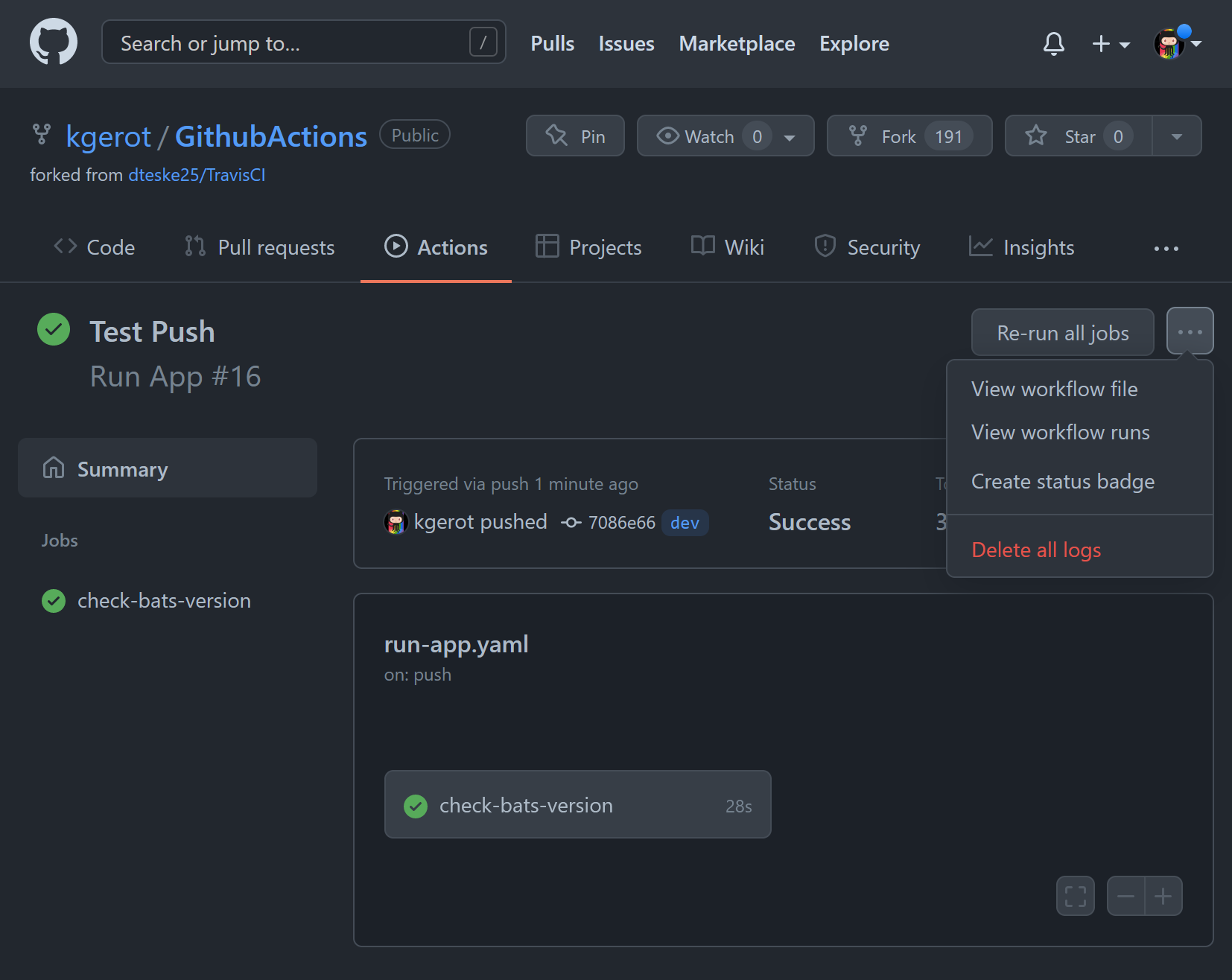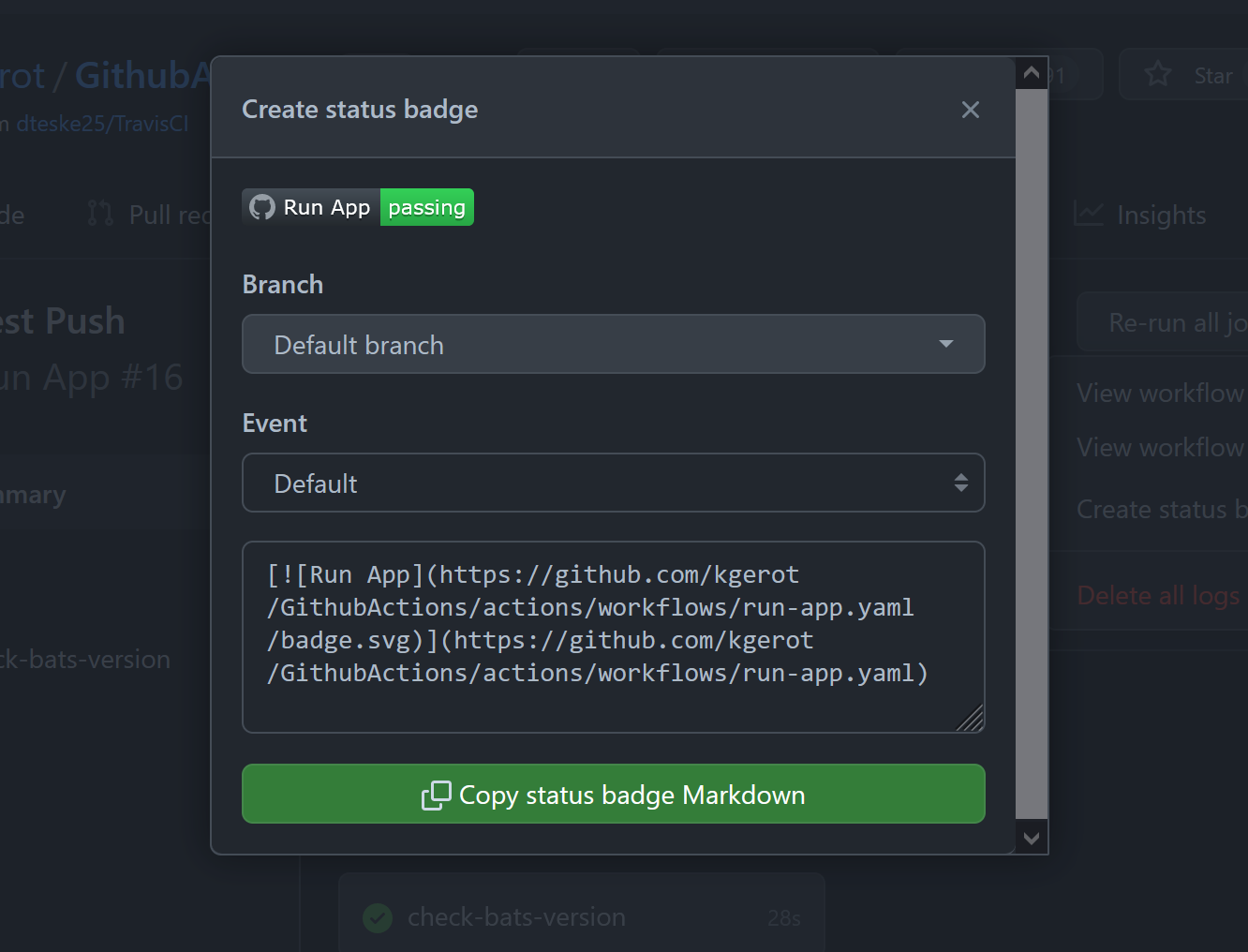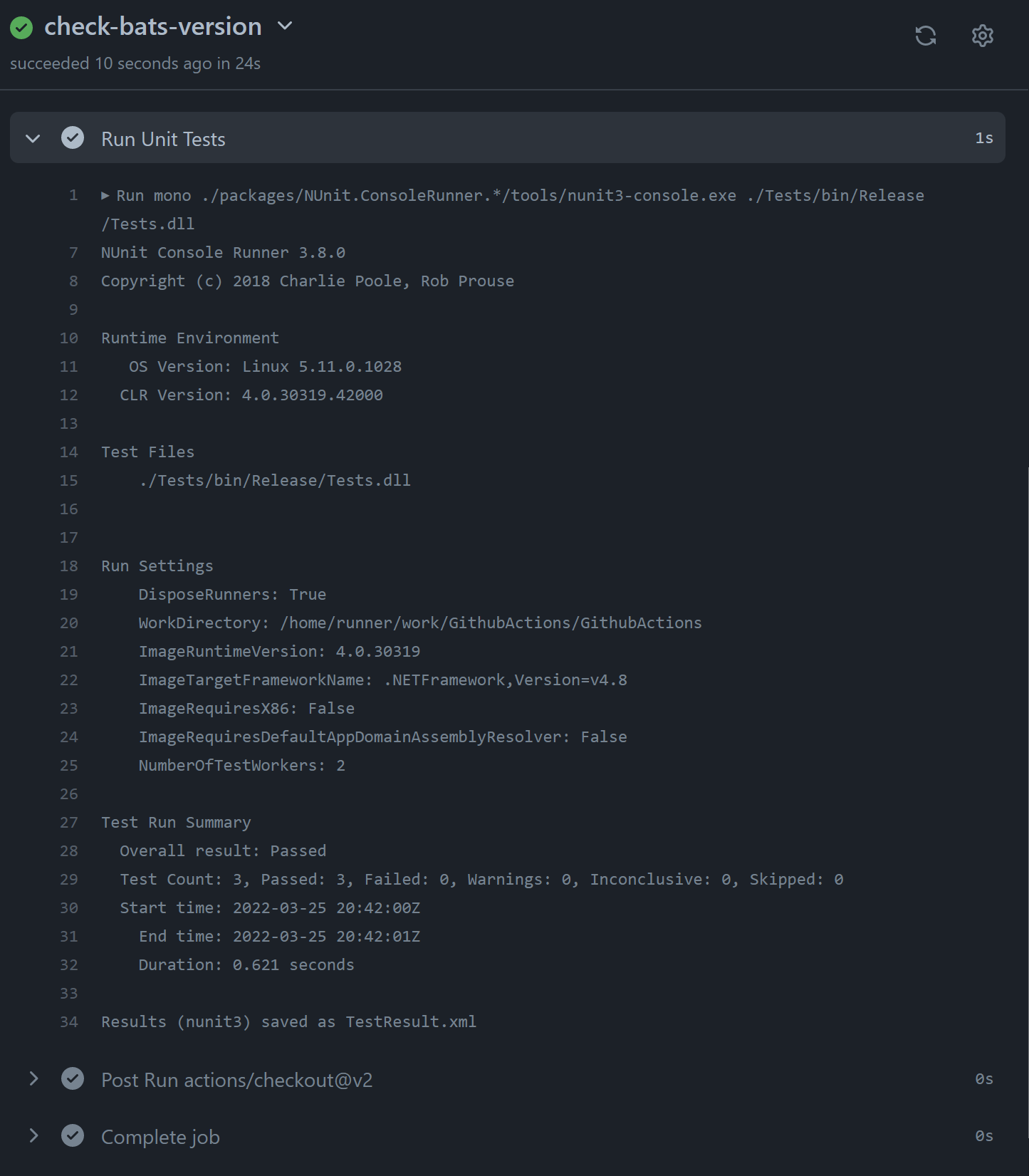Because Travis CI is no longer free, we are going to look at how Github Actions can provide continuous integration on a sample project.
Continuous integration can be used to perfom checks on written code, making sure that unit tests always pass or that formatting is followed, and that when changes are made, they don't break other areas of the code.
Fork and clone the repo to your computer to get started.
Just as a sanity check, make sure that everything is working before you begin. Try out the console app, see if you can break it and where the weaknesses in the code are. Try manually running the tests.
First, let's explore the Action UI on Github. Go to the Actions Tab and look at any running jobs. Currently, there should be one job that has run successfully.
If you open that job, you'll see we've prorammed the action to just echo Hello, World!. If yo ucannot find a job, that's okay. Sometimes Github will not run an action immediately upon forking.
We want our action to build our project. To do this, navigate to the file .github/workflows/run-app.yaml.
This is where we have define a workflow that runs a process called Basic Action that echos Hello, World!. It runs on the latest Ubuntu OS and runs everytime you push.
Replace the contents of the file with the code below
name: 'Run App FullName'
on: [push, pull_request]
jobs:
check-bats-version:
runs-on: ubuntu-latest
steps:
- uses: actions/checkout@v2
- uses: actions/setup-dotnet@v1
with:
dotnet-version: '5.0.301'
- uses: nuget/setup-nuget@v1
- name: Nuget Restore
run: nuget restore GithubActions.sln
- name: Install dependencies
run: dotnet restore GithubActions.sln
- name: Build
run: msbuild /p:Configuration=Release GithubActions.sln- Replace FullName on the first line with your name for grading.
- Commit and push these changes to master
- Open the Actions and see if your build is running (should be under the name of your commit).
Right now the build status badge at the top of this Readme is for the repo kgerot/GithubActions and we want it to be your repository.
To change this, go to your last build in Actions and open it. Click the three dots on the right side of the screen and click Create status badge.
Here, you can copy the markdown and replace the badge at the top of this Readme on the Github website or in VS.
Once Github Actions is up and running, it should rebuild every time you push a change, or open a pull request. Let's test this out.
- Implement the
Powermethod found inProgram.cs. - Commit and push the change to a different branch.
- Open a pull request to your repository's main branch (Do not submit a pull request to
kgerot/GithubActionsordteske/TraviCIand delete the request if you do)
To run the tests after every change, we'll have to modify the .yaml slightly. Add the follwing code to the steps section:
- name: Run Unit Tests
run: mono ./packages/NUnit.ConsoleRunner.*/tools/nunit3-console.exe ./Tests/bin/Release/Tests.dllYour .yaml file should look like this now:
name: 'Run App'
on: [push, pull_request]
jobs:
check-bats-version:
runs-on: ubuntu-latest
steps:
- uses: actions/checkout@v2
- uses: actions/setup-dotnet@v1
with:
dotnet-version: '5.0.301'
- uses: nuget/setup-nuget@v1
- name: Nuget Restore
run: nuget restore GithubActions.sln
- name: Install dependencies
run: dotnet restore GithubActions.sln
- name: Build
run: msbuild /p:Configuration=Release GithubActions.sln
- name: Run Unit Tests
run: mono ./packages/NUnit.ConsoleRunner.*/tools/nunit3-console.exe ./Tests/bin/Release/Tests.dllThis is the NUnit test runner, and will allow GithubActions to run the tests on the server from the command line. Commit and push this change to master. Open Travis and make sure the build completes.
If you've done this correctly, the following should appear at the bottom of your build log:
Follow the same format as the addition unit tests, and implement tests for the rest of the operations defined in Program.cs.
- Run the tests locally, and intentionally make one fail.
- Commit and push the changes to a different branch.
- Open a new pull request.
Github Actions will detect the pull request, and build it. Since we have a test failing, it should detect that. A failed build will look like the following;
And in GitHub it will look like:
- Push a change on the same branch to fix the test.
- See if the build completes successfully.
In GitHub, that will look like the following:
If everything passes, feel free to merge. You are now using CI.






